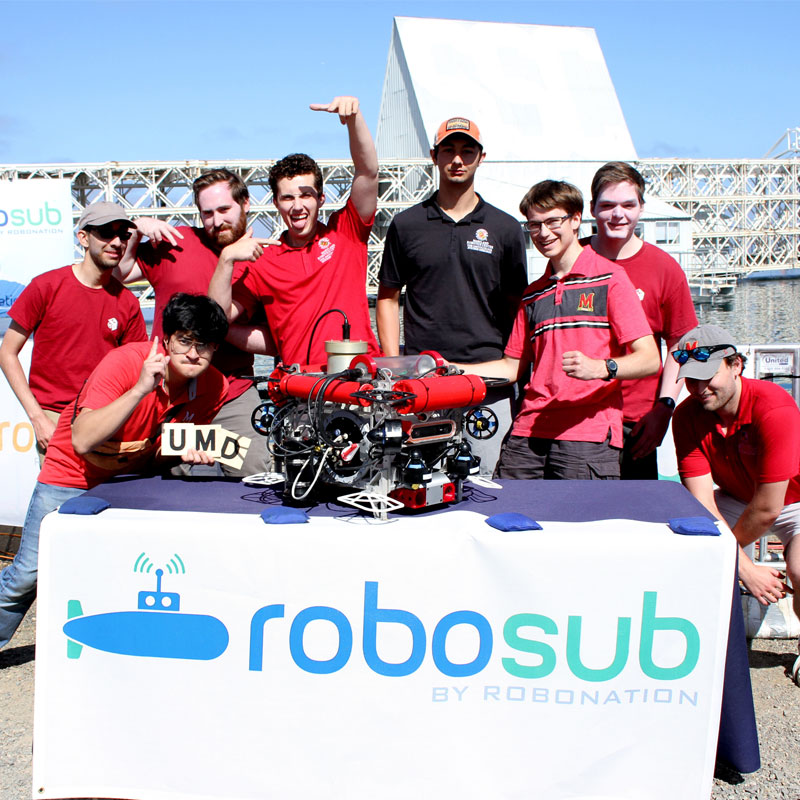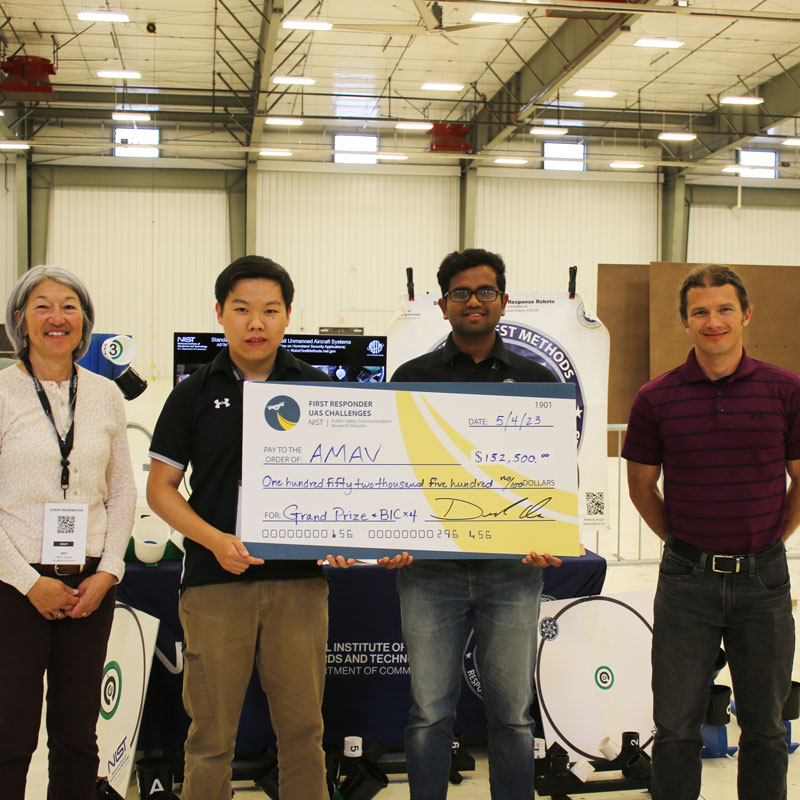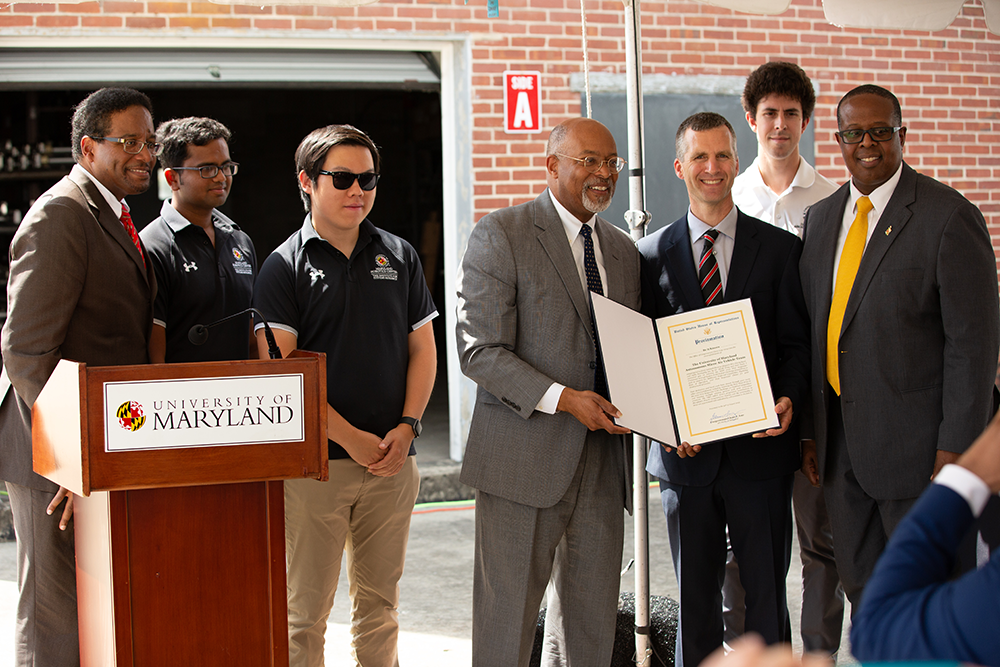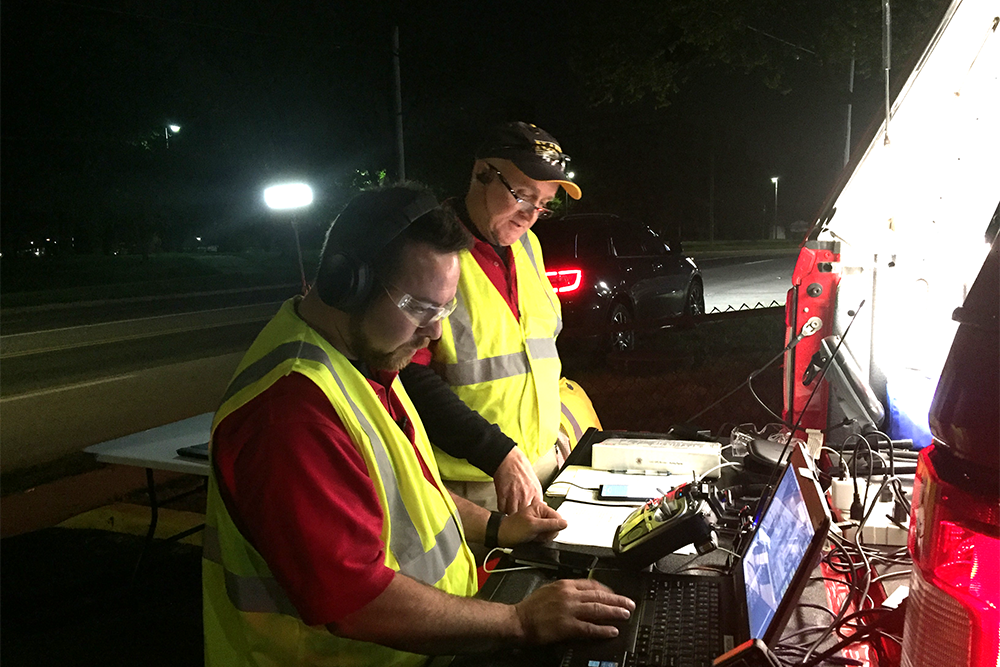News Story
UMD Team Advances in NIST UAS 5.0 Competition, Wins Three Best in Class Awards
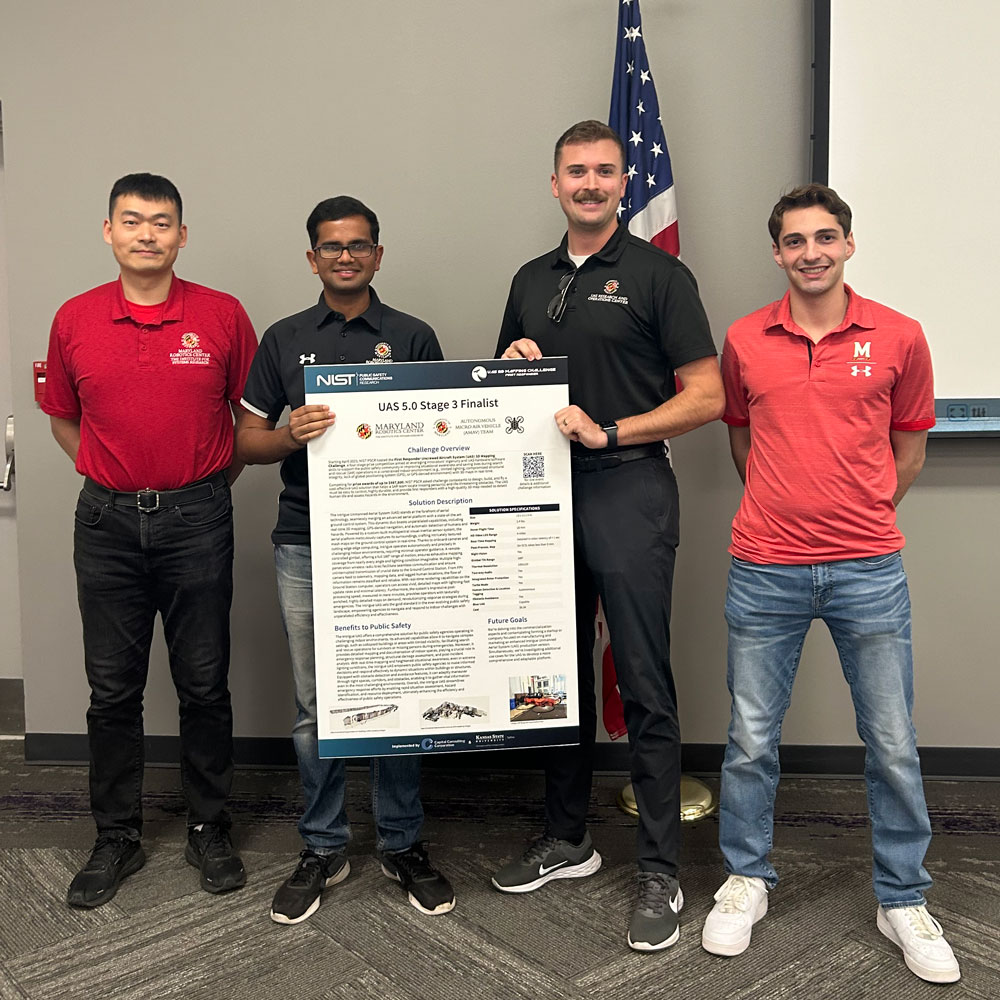
AMAV team representatives at competition in Kansas: aerospace engineering Ph.D. students Wei Cui and Animesh Shastry (Team Lead), UROC Engineer Grant Williams, and computer science/math undergraduate student Alec Luterman.
A University of Maryland (UMD) team wins Best in Class Awards and advances in NIST’s UAS 5.0 Competition: 2023 First Responder Uncrewed Aircraft System (UAS) 3D Mapping Challenge. This competition is the latest installment of NIST’s Public Safety Communications Research Division’s Prize Challenges. Part of a four-stage prize competition, this stage was aimed at leveraging innovators’ ingenuity and UAS hardware/software skills to support the public safety community in improving situational awareness and saving lives during search and rescue (SAR) operations taking place in a constrained indoor environment, such as limited lighting, compromised structural integrity, and lack of GPS availability.
UMD’s Autonomous Micro Air Vehicle (AMAV) Team took third place overall in the competition, and secured three Best in Class Awards with their UAS dubbed Intrigue: Map Data Acquisition Speed, Bill of Materials Total Cost, and Blue/Green UAS Capable.
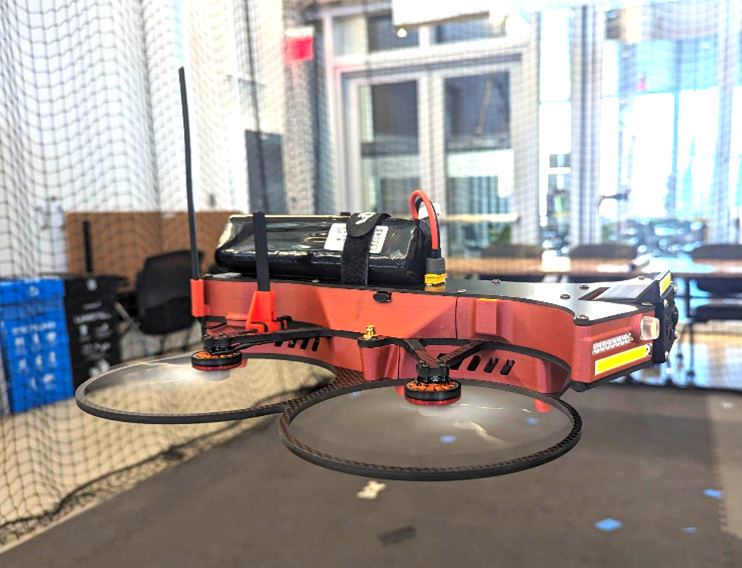 According to the team, Intrigue (pictured at right) offers a comprehensive solution for public safety agencies operating in challenging indoor environments.
According to the team, Intrigue (pictured at right) offers a comprehensive solution for public safety agencies operating in challenging indoor environments.
Its advanced capabilities, which include real-time 3D mapping, GPS-denied navigation, and automatic human and hazard detection, allow it to navigate through complex settings, such as collapsed buildings or areas with limited visibility, facilitating search and rescue operations for survivors or missing persons during emergencies.
In addition, the mapping capabilities provide detailed visual mapping, and documentation of indoor spaces, playing a crucial role in emergency response planning, structural damage assessment, and post-incident analysis.
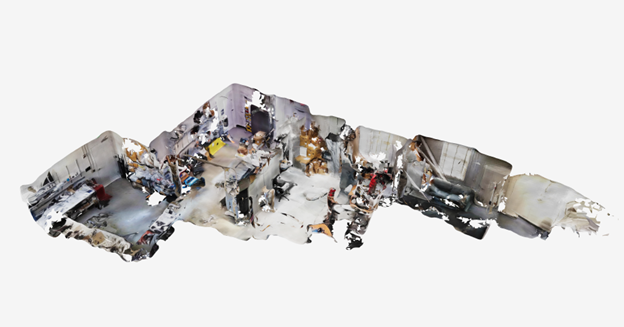 The image at left shows a map of cluttered interconnected rooms at UMD created by the UAS Intrigue.
The image at left shows a map of cluttered interconnected rooms at UMD created by the UAS Intrigue.
Intrigue is also equipped with obstacle detection and avoidance features, able to adeptly maneuver through tight spaces, corridors, and obstacles, and gather vital information even in the most challenging environments. By providing this level of detail quickly and efficiently, using UAS like Intrigue can streamline emergency response efforts by enabling rapid situation assessment, hazard identification, and resource deployment, enhancing the efficiency and effectiveness of public safety operations.
As part of their competition win, the team not only secured total winnings of $55,000 to support further development of their UAS, but they will also advance to the next stage of the competition, the Solution Accelerator, and the opportunity to secure additional funding while pursuing technology in the interest of public safety.
Published April 25, 2024
